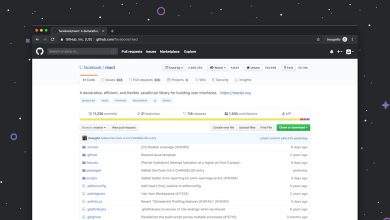
What are the steps involved in conducting a site audit?
Whether you are managing a personal blog or a corporate website, conducting a thorough site audit is essential to ensure your website’s performance, search engine visibility, and overall user experience. A site audit is a comprehensive analysis of all the factors that determine a website’s visibility in search engines. A well-executed audit can detect technical issues, content gaps, and optimization opportunities that are crucial for maintaining online success.
Here are the essential steps involved in conducting a site audit:
1. Define the Objectives of the Audit
Before diving into technical tools and data, it’s important to determine the purpose of your audit. Are you focusing on technical errors, SEO performance, page speed, or user experience? Clearly defining your goals will help tailor your audit process and make the results more actionable.
2. Review Site Health with Technical Tools
A technical audit addresses behind-the-scenes elements that are often overlooked but have a significant impact on performance. Use professional tools such as Google Search Console, Screaming Frog, or SEMrush to scan your website.
Check for:
- Broken links and missing pages (404 errors)
- Redirect loops or unnecessary redirects
- Mobile-friendliness and mobile usability issues
- Secure certificate (HTTPS implementation)
- Robots.txt and XML sitemap configuration
3. Evaluate On-Page SEO Elements
This step focuses on aspects visible to users and search engines. Review key on-page SEO factors for each page:
- Title Tags: Are they unique, optimized, and within character limits?
- Meta Descriptions: Do they accurately describe page content and encourage clicks?
- Headers (H1, H2, etc.): Is the content logically structured?
- Keyword Optimization: Are target keywords used appropriately throughout the content?
- Image Alt Text: Are images properly tagged for accessibility and SEO?
4. Analyze Website Content Quality
Content plays a pivotal role in rankings and user engagement. During a content audit, identify:
- Duplicate, outdated, or low-quality content
- Pages with low word count or poor keyword alignment
- Opportunities to expand content or add valuable media such as infographics or videos
High-quality, authoritative content helps establish trust with your audience and with search engines.
5. Inspect Site Structure and Internal Linking
Site architecture should facilitate both user navigation and search engine crawling. A clean and hierarchical structure improves indexation and helps distribute link equity efficiently.
Look for:
- Orphan pages that are not linked from anywhere
- Internal links using effective anchor text
- Logical navigation paths for users
6. Assess Site Speed and Core Web Vitals
Page loading speed significantly affects user retention and search rankings. Google’s Core Web Vitals focus on load time, interactivity, and visual stability. Use tools like Google PageSpeed Insights or Lighthouse to evaluate:
- First Contentful Paint (FCP)
- Largest Contentful Paint (LCP)
- Total Blocking Time (TBT)
- Cumulative Layout Shift (CLS)
Apply recommendations such as compressing images, enabling browser caching, and reducing server response time.
7. Check Backlink Profile and Off-Page SEO
A robust backlink profile contributes to a site’s authority. Use backlink analysis tools like Ahrefs or Moz to determine:
- Number and quality of incoming links
- Spammy or irrelevant backlinks that may cause penalties
- Competitor backlink comparison for strategy insights
8. Evaluate Mobile Usability
With mobile traffic dominating across most regions, your website must function smoothly on all devices. Ensure that:
- Buttons and texts are easily clickable/readable on small screens
- Navigation is seamless on tablets and smartphones
- Pop-ups and interstitials don’t obstruct user interaction
9. Generate a Report and Prioritize Action Items
Once the audit is complete, compile a structured report highlighting issues discovered and recommended actions, sorted by urgency and impact. Use visual aids like charts or tables to present data clearly to stakeholders.
10. Implement Improvements and Monitor Progress
Fix identified issues based on audit recommendations. After implementation, keep monitoring performance using analytics dashboards and SEO tools to ensure your site continues to improve over time.
[ai-img]web analytics, performance metrics, seo improvement tracking[/ai-img]Conclusion: A site audit is not a one-time effort, but rather an ongoing process that helps maintain and grow a website’s performance, credibility, and competitiveness. Following the structured steps outlined above ensures that your site remains healthy, visible, and user-friendly in a rapidly evolving digital landscape.



